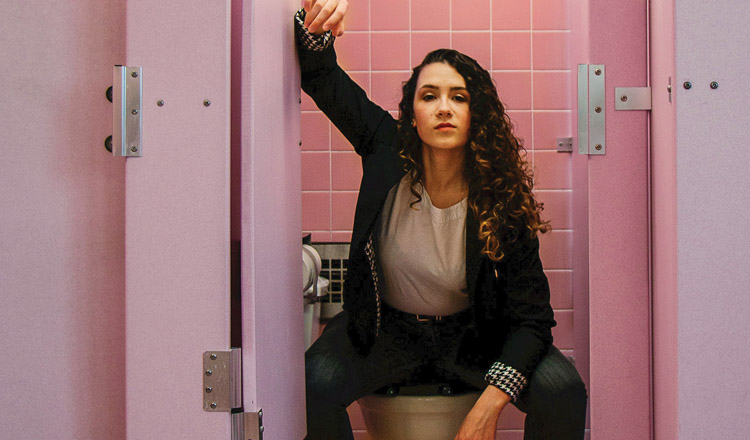Documentary photo series featuring campus bathrooms explores issues of privilege and discrimination in public spaces.
There are thousands of bathrooms on campus. More than most students will ever see. More than most students will ever need. But for some, heading for the nearest restroom can be daunting and uncomfortable when the space feels unwelcoming to them.

It’s a topic Hope Kelham (LA’20) — a triple major in women’s, gender, and sexuality studies; photography and related media; and creative writing — covered in a recent photo series. The project stemmed from a class assignment. The course, documentary photography, explores various styles, such as environmentalism, social issues, and personal documentary. For her final class project, Kelham chose to depict a social issue that resonated with her studies on gender and sexuality.
“I realized that gender, specifically bathrooms, and the privilege of who can and cannot use a certain restroom, was at the forefront of what I wanted to cover,” she says. “I specifically wanted to do bathrooms because when you talk about gender spaces, there are so many, but bathrooms are so prevalent. That’s how I started thinking about this project. It began for a class as a three-week, but I continued it a bit into the following summer.”
Kelham’s series “The Gendered Bathroom” won first prize in the photo category at the Undergrad Art and Design Exhibition held by Purdue Galleries in February. In the exhibition, her work was displayed in a series of small-scale triptychs.
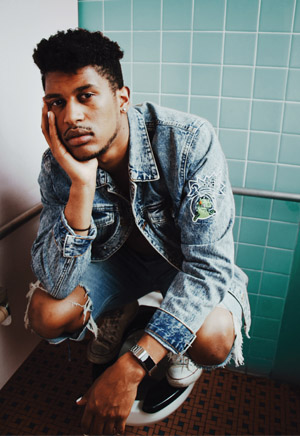
“Online, you can make it any size you want to,” Kelham says. “But for the exhibition, I wanted the images to be tiny and something you had to really get up close and personal with since this is such a personal topic.”
For this series, it was important to Kelham to use models who were also members of the LGBTQ community who may have experienced harassment, judgment, microaggression, and even violence because of sexuality or gender. All but one of the models are Purdue students. All of the bathrooms featured in the series are on campus. Kelham and her models ventured out together, scouting spaces that conveyed a strong visual aesthetic.
“I think I spent an entire Saturday just going from building to building trying to politely look into bathrooms,” Kelham says. For the men’s restrooms, Kelham brought a male friend with her to scout. “It was interesting in that sense to work on a project talking about gender, but then I also felt uncomfortable entering these spaces.”
Shortly after this issue went to press, Purdue was named one of the nation’s top 20 best colleges for LGBTQ+ students by BestColleges, in partnership with Campus Pride. The rankings recognize schools that have established the highest standards for inclusive environments while maintaining strong academic programs. Purdue also claimed the No. 1 spot among Indiana schools.
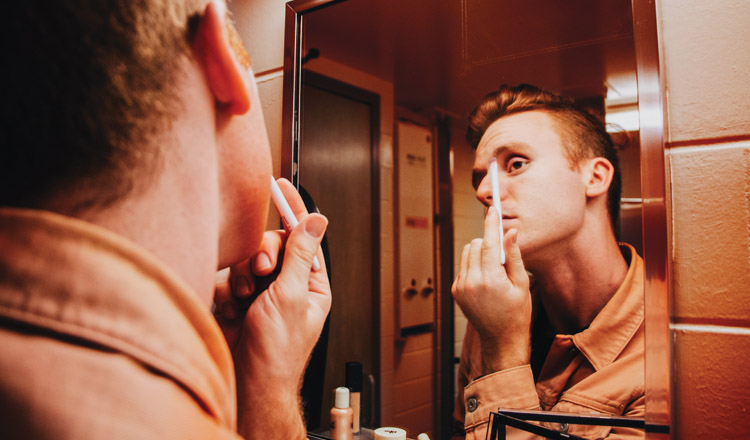
Through her work, Kelham asks others to think about their privilege, but the process led to her own reflections about gender and privilege and questioning why she felt uncomfortable. Which is something she’s thought about a lot.
“I still don’t think I have a good answer yet,” Kelham says. “But I definitely realized what it feels like to feel uncomfortable in a space and not know why. Or feeling uncomfortable in a space and realizing I shouldn’t be uncomfortable. It really helps you to see someone else’s perspective.”
Working with her models, Kelham offered them a choice of what type of restroom they would feel comfortable posing in and asked them to push the norms of masculine- and feminine-presenting clothing and posturing.
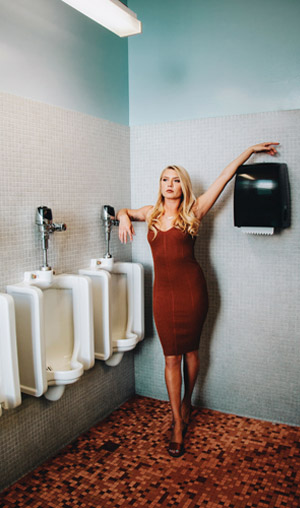
“I definitely wanted it to be their choice,” Kelham says. “This is a project where I didn’t want to be behind the camera controlling everything. So I just asked what they would feel comfortable doing. I didn’t want to force anyone to do anything they didn’t want to do because that’s completely opposite of what this project is about.”
Kelham and her models talked a lot about unnecessary binaries before the shoot — including how much privilege people have or do not have in the spaces they enter. By asking models to dress in outfits that pushed the ideas of what is feminine or what is masculine, the series more broadly explores how perceived gender and clothing preferences alter how a body can move freely in the setting of a bathroom.
In one setting, a woman dressed in traditionally masculine-presenting attire physically dominates a bubblegum pink bathroom, taking up as much space as possible, controlling the space with her body. In another, a recently transitioned woman chose to apply makeup in the mirror
“These photographs are trying to talk about how no one, regardless of appearance, sexuality, or gender, should be discriminated against or harassed,” Kelham says. “Bathrooms shouldn’t have to be gendered spaces, but instead, safe and intimate spaces. All we should be concerned about when we use the restroom is how long we wash our hands.”
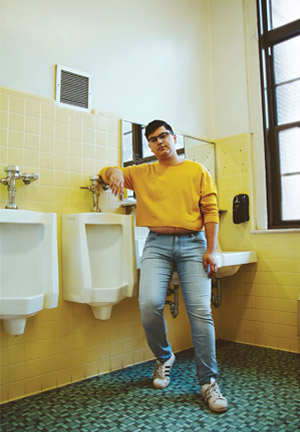
Although Kelham only encountered one nonbinary restroom in her explorations, there are approximately 115 buildings with gender-inclusive restrooms across campus. The Lesbian, Gay, Bisexual, Transgender, and Queer Center maintains a list on its website that is also accessible through the Refuge Restroom app.
Kelham participated in virtual graduation in May with her Class of 2020 peers. This fall, she begins her MFA in creative writing at Boise State, where she will study poetry. As for her photography work, Kelham hopes she inspires others to recognize their own privilege.
“There is a lot of anxiety when it comes to public restrooms and the fear of harassment,” Kelham says. “I don’t expect my photographs to change anyone’s perspective, but I can hope that they at least start some sort of conversation where everyone’s perspectives are respected. If someone feels uncomfortable by these images, I hope it makes them question why they’re uncomfortable. That’s all I could ask for in a photo series.”
See more of Kelham’s work at hopekelham.com.
Editor’s note: The original version of this story misstated the number of gender-inclusive restrooms on campus. The information has been corrected in this version.

